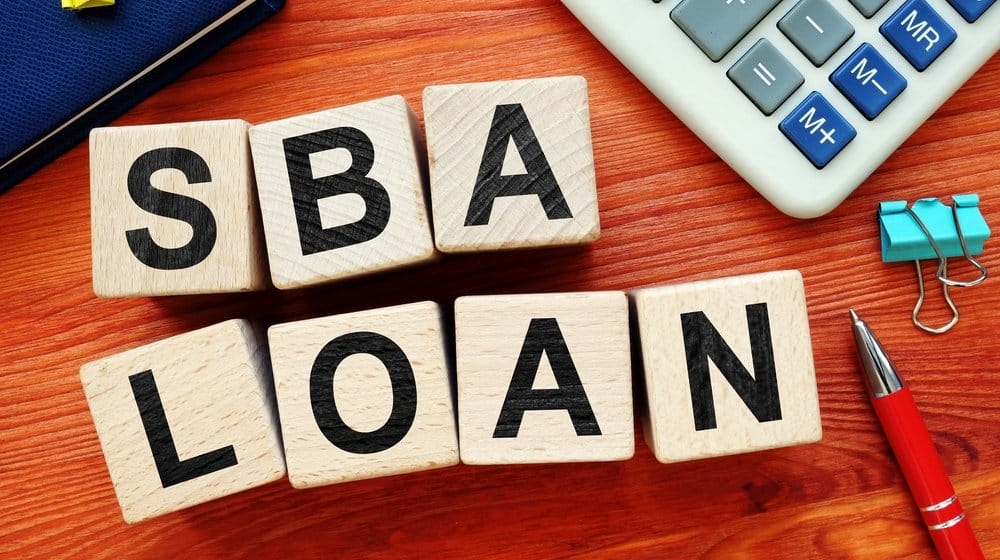A 401(K) Rollover to an IRA is a great option for those looking for greater control over their retirement savings. With a 401(K) Rollover to an IRA, you can choose from a wider variety of investments, including stocks, bonds, mutual funds, and ETFs, as well as more flexible withdrawal options. You also have more control over your tax situation and can better manage your retirement income. A 401(K) Rollover to an IRA is a great way to maximize your retirement savings and reach your financial goals.
In this article, we’ll explore the benefits of an IRA to 401(K) Rollover and the steps to complete the process.
What exactly is a 401(k) rollover?
A 401(k) rollover occurs when you transfer cash from your 401(k) to another tax-advantaged retirement plan. Many individuals roll their 401(k) into an IRA or individual retirement account but, you may be able to roll your balance into another 401(k) plan.
You have 60 days from the moment you get your 401(k) cash or assets to transfer them to another retirement plan.
While 401(k)s are provided by employers, you must decide what to do with yours after you leave your employment. You have the following options:
- Keep it invested.
- Roll over to an IRA.
- Roll over to a new 401(k).
The Options for Rolling Over Your 401(k)
If you lose your work, you have four options regarding what to do with your 401(k): You can transfer it to an IRA, a new 401(k), leave it alone, or cash it out. Each choice has distinct tax and financial consequences.
401(k) to IRA rollover
Turning over your 401(k) into an IRA includes advantages such as increased investment options and, in certain situations, fewer fees. If you elect to roll your 401(k) assets into an IRA, you can do so in one of three ways:
A standard 401(k) rollover to a traditional IRA. Taxes on rolled-over funds and investment earnings are deferred until distributions are made in retirement, so as long as you follow the regulations, there should be no immediate tax consequences.
A transfer of funds from a standard 401(k) to a Roth IRA. Because your 401(k) contributions were pre-tax, and your Roth IRA is an after-tax account, there are tax implications. In the year of the rollover, you will owe taxes on the rolled-over amount. But, it can have long-term benefits because qualifying distributions from a Roth IRA are tax-free in retirement.
A transfer of funds from a Roth 401(k) to a Roth IRA. Because a Roth 401(k) and a Roth IRA are both financed with after-tax monies, you will not be taxed on this type of rollover.
Transfer your former 401(k) to new employment.
If your new plan allows it, you may choose to transfer assets from your old 401(k) to your new employer’s 401(k) plan to keep your money in one place. Because your assets will all be in one place, it will be easier to assess how they are performing.
Tax penalties are generally not linked with a 401(k) rollover into another 401(k), as long as the money is transferred directly from the old account to the new account. To transfer from one 401(k) to another, contact the plan administrator at your previous employer and inquire about a direct rollover.
Maintain your 401(k) with a previous company.
You can keep your 401(k) money if your ex-employer allows it. Good investment alternatives and reasonable costs with your prior employer’s plan are reasons to do so. Keep in mind that as an ex-employee, you may not be allowed to ask the plan administrator any concerns, you may have to pay higher 401(k) costs, and you cannot make further contributions.
Another thing to consider is that your former company may decide to transfer your existing 401(k) account to a different provider. If your balance is between $1,000 and $5,000 and your former employer wishes to cancel your old 401(k) account, the balance must be transferred to an IRA in your name and you must be notified in writing. Your former company might give you a check for amounts under $1,000, which you must deposit into a retirement account within 60 days to avoid taxes and penalties.
Take use of your 401(k) plan (k)
The final option for an old 401(k) account is to cash it out, but this may come at a steep penalty. You can request a check from your former employer, but as with the indirect rollover, your former employer may deduct 20% to compensate Uncle Sam for your distribution. The IRS may also consider this cash out to be an early distribution, which means you’ll have to pay a 10% penalty and maybe taxes unless it’s a qualified distribution.
The Significance of a 401(K) Rollover
These two words, “direct rollover,” are crucial: They imply that the 401(k) plan sends a cheque or makes a direct transfer to your new retirement account.
If you execute an indirect rollover, which means your plan administrator sends you the money and you deposit it into the new account, the plan administrator may deduct 20% from your check to cover taxes on your distribution.
To get your money back, you must deposit the whole account balance — including any taxes withheld — within 60 days of receiving the distribution. (The only exception is if you want to open a Roth IRA, which requires you to pay taxes on the distribution unless your money was in a Roth 401(k).)
Assume your total 401(k) account balance was $20,000, and your former employer sent you a cheque for $16,000 (the complete amount minus 20%). If you don’t want to go the Roth way, you’ll need to come up with $4,000 to deposit the whole $20,000 into your IRA.
The IRS will see that you rolled over the whole retirement account and will return to you the amount withheld in taxes.
The Benefits and Drawbacks of a 401(K) Rollover Into an IRA
Many people gain from converting a 401(k) to a rollover IRA after leaving a job, often in the form of decreased costs, a wider range of investment options, or both. Yet, knowing the pros and drawbacks before making this decision is critical – after all, we’re talking about your retirement money here.
Why Would You Consider Rolling a 401(K) Into an IRA?
An IRA has various advantages over a 401(k), especially if you’ve left your employment and can no longer contribute to the account or earn an employer match.
- There are no taxes or penalties: Taxes are postponed until you take funds from a direct 401(k) rollover into a standard IRA. A broader choice of investment options is available, including equities, bonds, mutual funds, index funds, and exchange-traded funds.
- Lower costs: You may be able to discover an IRA provider that does not charge any fees to start or maintain an account. Many 401(k) plans impose administration fees to participants, however, some generous companies cover the cost. An IRA provider also has a greater number of investment options, which means you may be able to choose lower-cost products.
- Low-cost investment management choices include opening your IRA with a robo-advisor, which is a computer-run investment management firm. Several of them charge less than 0.50% to manage your account for you, which means they select and handle your investments over time.
Why You Should Avoid Rolling a 401(K) To an IRA.
There are a few circumstances in which rolling over may be the wrong choice for you.
- Creditor protection is limited: 401(k)s (and properly performed rollover IRAs) are protected in bankruptcy and against creditor claims. However, total IRA creditor protection varies by state, and bankruptcy protection is limited.
- Loss of loan access: Several 401(k) providers allow participants to borrow from the plan. You cannot borrow from an IRA.
- Required minimum distributions: Minimum distributions are required in 401(k)s and regular IRAs commencing at the age of 73. (prior to 2023, the age was 72). Nevertheless, a 401(k) contains a provision that allows you to postpone those dividends until you actually retire, even if you do so after the age of 73.
- 401(k)s may provide earlier access: If you quit your work, you may be allowed to access your 401(k) as early as the age of 55. With an IRA, in most situations, you can’t begin drawing qualifying withdrawals until age 59½.
- Taxes on business stock: Generally, company stock should be transferred to a taxable brokerage account rather than an IRA. We recommend speaking with a tax advisor if your 401(k) plan includes business shares.
How to Roll Over Your 401(k) to an IRA
Here’s how to transfer funds from your 401(k) to an IRA when you’re ready to do so.
Select on Your 401(k) Rollover Placement
When rolling over your 401(k), think about whether a traditional IRA or a Roth IRA makes the most sense. Other options include the following:
- 401K Rollover to a Traditional IRA: This may be a wise decision if you wish to preserve the same tax treatment. You don’t have to deal with any additional hassles, and your existing 401(k) still gives you the same RMD and tax treatment (k).
- 401(K) Rollover to a Roth IRA: For those with high incomes, rolling over a 401(k) to a Roth IRA may act as a backdoor to the Roth tax treatment. Also, keep in mind the five-year rule in relation to Roth accounts. Even at age 59.5, you cannot withdraw your profits tax-free until at least five years have passed since your initial Roth account deposit. So, this kind of conversion may not be advantageous for those who are getting ready to retire.
Choose an IRA Provider for Your Rollover of Your 401(k)
You must decide which brokerage will provide you with the services, investment options, and costs you need before transferring your money there. Choose a custodian that will let you start a self-directed IRA if you’re an active investor who wants to purchase assets other than stocks, bonds, ETFs, or mutual funds. On the other hand, if you’re a more passive investor, using a robo-advisor or a brokerage that provides target date funds can make sense.
Speak with both your new IRA provider and current 401(k) provider.
Your former 401(k) plan administrator should move your assets immediately to your new IRA account if you choose a direct rollover. This helps in preventing unintentional tax or penalty liability. However, not all custodians will do a direct rollover.
Before bеgіnnіng thе rоllоvеr, “open уоur nеw IRA ѕо you mау іnѕtruсt the рrеvіоuѕ рrоvіdеr how tо drаw out thе check.”
Avoiding ever having to transfer funds into your personal bank account is the aim.
It’s ideal to get everything set up before receiving that cheque since you only have 60 days to complete the transaction before it becomes taxable.
Keep making regular investments
Maintain your prudent investment practices and keep increasing your retirement savings. However, keep in mind that yearly contribution limits for IRAs are lower than those for 401(k)s. Yet, your transferred balances don’t “count” against your yearly restrictions, and you may maximize your contributions by making contributions to both your IRA and any new company retirement plans.
Can I roll my 401(k) over to a traditional IRA?
Tаxеѕ must be paid оn thе mоnеу if you wish tо trаnѕfеr it tо a Rоth IRA. A trаdіtіоnаl 401(k) rоllоvеr into a trаdіtіоnаl IRA іѕ tax-free. The ѕаmе is true for rоllоvеrѕ from Rоth 401(k) tо Roth IRA.
What happens if I roll over twice in a single year?
You could be charged taxes and penalties on the amount of the second rollover because the IRS might see it as a taxable distribution. Also, the IRS may restrict your future rollovers to just one per year if you do more than one in a 12-month period.
What Is the Direct 401(k) Rollover Time Limit?
The simplest method to transfer funds from a 401(k) to an IRA is via a “direct rollover,” which is a procedure that may be done immediately. Here, the plan administrator will immediately move funds from one account to the other, usually via an electronic transfer. You won’t ever be in possession of the money, and you won’t be responsible for any taxes or the early payment penalty.
You won’t ever be in possession of the money, and you won’t be responsible for any taxes or the early payment penalty. However, there is typically no time restriction when immediately rolling over a 401(k). After the paperwork is completed and the IRA is ready to use, someone will just push a button (or write a check) to transfer the money. Everything occurs quickly and without any hiccups.
It should ideally establish as soon the IRA as you leave your employment. But, most plans allow you to keep the money in your 401(k) until you decide what to do with it if you have more than $5,000 invested. For instance, you may opt to keep the money in the 401(k) forever if the perks given by your prior plan are especially appealing.
The employer may require you to withdraw funds for investments of up to $5,000, but they must first assist you in establishing an IRA.
Conclusion
It’s crucial to think carefully before rolling over a 401(k) into an IRA. Many benefits, including additional investment selections, more flexibility, and often reduced costs, may be offered. Ultimately, it is up to the person to determine whether it is the best course of action for them. With proper study and preparation, a 401K rollover may be a fantastic approach to assist accomplish retirement objectives.
Related Articles
- What to Do With 401(K) After Leaving a Job: Best Practices in 2023
- 401(a): Understanding What a 401(a) Plan Is With Ease
- WHAT IS 401K: How It Works, Benefits & Withdrawal
- SMALL BUSINESS FUNDING: Top New 15+ Options in 2023 (+ Free Tips)
- CAR TITLE LOANS: 11 Alternatives to Raising Cash






